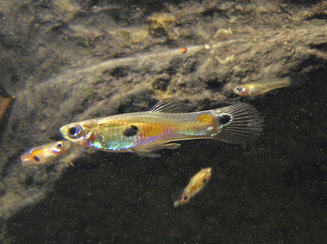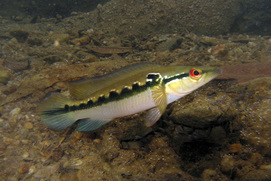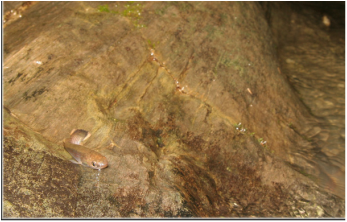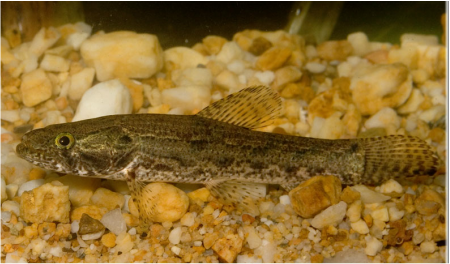Guppies
|
The Trinidadian guppy (Poecilia reticulata) is an excellent species for studying the relationship between adaptive evolution across different environmental circumstances because:
|
|
On Trinidad, guppies live in streams, or portions of streams, that can differ in the species of predators that the guppies have to contend with. Some streams are high-predation environments, others low-predation. Different predation environments are often right next to one another, separated by a waterfall (which neither guppies nor predators can cross).
|
Guppies from high-predation environments experience much higher mortality rates than do guppies in low-predation environments. High mortality is associated with the following characteristics, all of which have a genetic basis:
- Earlier maturity
- Greater investment of resources in reproduction
- More and smaller offspring.
- Transplanting guppies from high-predation localities into sites from which they and their predators had previously been excluded by natural waterfalls, thus lowering mortality rates;
- Introducing predators into low-predation sites, thus increasing mortality rates.
Killifish
|
The killifish (Rivulus hartii) follows a similar pattern of evolutionary changes across different ecological settings in the streams of Trinidad. Several traits, however, distinguish killifish from guppies, especially their unique dispersal capabilities. Killifish can tolerate being out of the stream for extended periods and can navigate around barrier waterfalls to colonize upstream environments.
|
|
Because of their dispersal ability, killifish occur across a gradient of predation environments separated by barrier waterfalls:
|
Killifish have evolved in response to this gradient of ecological predation pressure and mortality. As predation pressure (and mortality) increases downstream, killifish have evolved the following characteristics:
- Earlier maturity
- Greater investment of resources in offspring
- More and smaller offspring




